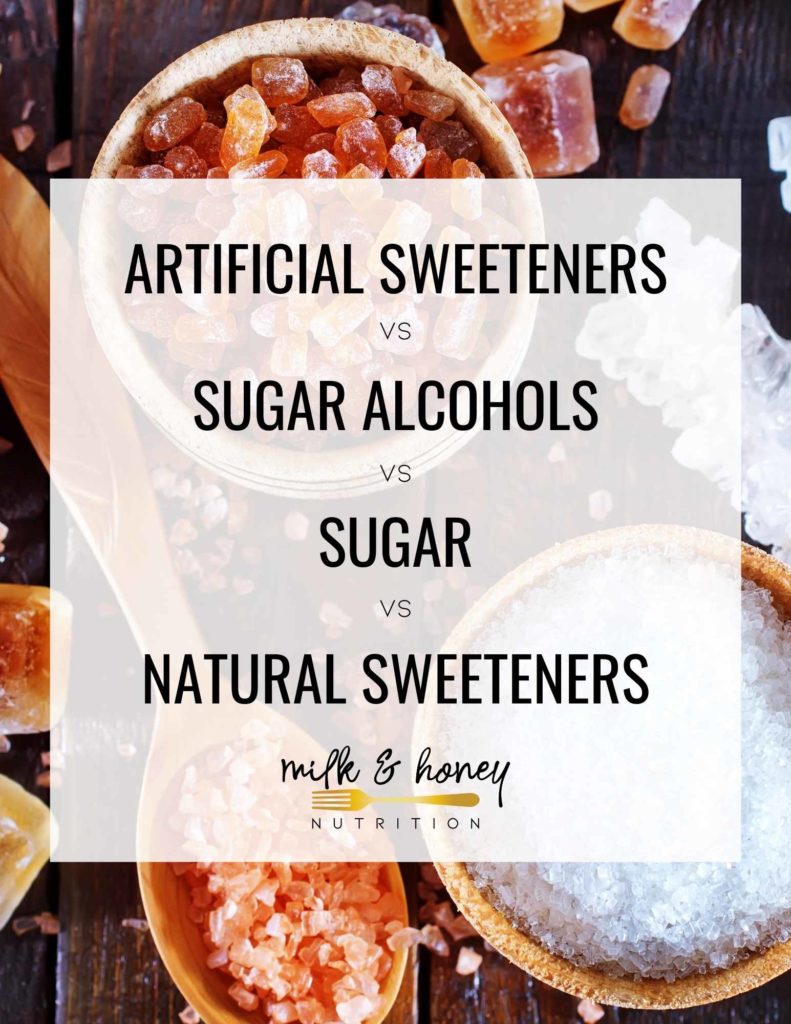
Whether you’re a person living with diabetes or not, it’s important to understand the different types of sugars and sweeteners on the market.
Artificial sweeteners, sugar substitutes, non-nutritive sweeteners, natural sweeteners… regardless of what you call them, there always seems to be a debate happening about which ones are ok to use and how much you should consume them. I’ll give a brief overview of what they are, the different types, and how they’re used.
And as always, remember that this article is not intended to provide medical advice, diagnosis, opinion, treatment or services. This article and the links contained in it provide general information for educational purposes only. The information provided in this article is not a substitute for medical care, and should not be used in place of the advice of your physician or registered dietitian.
Non-Nutritive Sweeteners
We typically refer to these sweeteners as sugar substitutes or artificial sweeteners, but the official term is “non-nutritive sweeteners”. Here’s some general facts about all non-nutritive sweeteners:
- Contain no (or very little) calories or nutrients (this is why they’re called “non-nutritive”)
- They can be derived from plants, and sometimes even sugar itself
- They are sweeter than sugar, so you don’t need to use as much
- Some artificial sweeteners are not digested, and pass through the GI tract almost unchanged
Artificial sweeteners list
There are currently eight non-nutritive sweeteners approved for use in the US. All non-nutritive sweeteners must be approved by the US Food and Drug Administration (FDA) before they can be used.
- Aspartame (sold as Equal® or NutraSweet®) It is 200 times sweeter than sugar. Used in many different food products but CANNOT be consumed by people who have phenylketonuria (PKU).
- Acesulfame potassium (also known as Acesulfame K) is typically found in diet sodas.
- Neotame is not as common but is also used in diet foods and drinks. It is 7,000 to 13,000 times sweeter than sugar.
- Saccharin (sold as Sweet ‘N Low®) is the oldest artificial sweetener still sold today. It is 200 to 700 times sweeter than table sugar.
- Sucralose (aka, Splenda®) is 600 times sweeter than sugar. Sucralose is used in everything from low calorie foods, to beverages, to baked goods, or can be added to foods by the consumer.
- Stevia comes from the leaves of the stevia plant. Stevia is 200-300 times sweeter than sugar. Stevia is used in many foods and beverages, or on it’s own.
- Luo han guo (Monk fruit extract) is made from crushed monk fruit. Up until January 2019, it was the newest non-nutritive sweetener available in the US (it was approved for use here in 2010), but it has been used in China for centuries. It is about 10-250 times sweeter than sugar. It is often used in combination with other non-nutritive sweeteners or sugar.
- Advantame was approved by the FDA in January 2019, and available for use in the US. It is 20,000 times sweeter than sugar, but it is not widely used at this time.
- Allulose is a naturally occurring sugar found in foods like figs, raisins, and molasses. But, the allulose you find at the grocery store has been created artificially from fructose (fruit sugar). Allulose is about 70% as sweet as sugar and is not absorbed by the human body.
*You can read more about the FDA and non-nutritive sweeteners on FDA.
Sugar Alcohols
Sugar Alcohols are also considered sugar substitutes, but they do provide some calories, so they are classified as “nutritive sweeteners”. Sugar alcohols can be derived from fruits and vegetables, but the sugar alcohols found in foods and drinks are often manufactured. You’ll usually see sugar alcohols in foods and drinks labeled as “sugar free” or “reduced sugar” or “no sugar added”. Additionally, with the popularity surge of the keto diet here in the US, we are starting to see more and more processed foods looking to be “keto-friendly” that use sugar alcohols in place of sugar.
There are several types of sugar alcohols, but the most common ones include:
- erythritol
- hydrogenated starch hydrolysates (HSH)
- isomalt
- lactitol
- maltitol
- mannitol
- sorbitol
- xylitol
Some sugar alcohols (mannitol and sorbitol especially) can cause excessive bloating, loose stools, and gas. This is why you’ll see a GI distress warning on many “sugar free” or keto products. This sugar alcohol resource from the FDA is a great resource for learning more about sugar alcohols.
Sugar alcohols v. sugar
On average, sugar alcohols provide about 2 calories/g (compared to sugar which is 4 calories/g). Their chemical structure does resemble alcohol and sugar, but they do not affect the body like alcohol does.
Natural Sweeteners
These sweeteners are generally considered to be more “natural” forms of sugar and have the same nutritive/calorie value as table sugar. My use of the term “natural” here is just my opinion and does not have any official definition for the purposes of this article. The sweeteners listed here are not heavily processed and more closely resemble how they exist in nature… but are still sugar and should be consumed in moderation.
- Raw honey comes from honeycomb and contains antioxidants and bee pollen. Unlike regular honey, raw honey is unpasteurized and may contain more nutrients.
- Maple syrup comes from the sap of sugar maple trees. After the sap is boiled, it turns into a thick syrup. Keep in mind, the darker the syrup, the stronger the maple flavor will be.
- Dates are a chewy, sweet stone fruit. Most of its calories comes from carbohydrates, however, dates do contain fiber, antioxidants, and essential minerals. Date sugar is made from dehydrated ground dates.
- Coconut sugar comes from coconut palm sap. The sap is heated until the water evaporates. Coconut sugar contains a small amount of essential minerals.
- Blackstrap molasses comes from ground sugar cane and is boiled 3 times and turns into a thick, dark molasses. 1 tablespoon of blackstrap molasses contains 300 mg of potassium.
- Agave is a type of plant that is harvested to make agave nectar.
Many of these “natural” sweeteners have other nutrients or properties (think antioxidants, vitamins, etc.) that make them a slightly better choice than table sugar. For someone with diabetes, it is important to understand that every person is unique, and your body may tolerate each of these differently than other people and even other people with diabetes, but they are still sugar.
Natural sugar vs artificial sugar
As previously mentioned, natural sugar is sugar that comes from a more “natural” source, contains additional nutrients, and is less processed compared to artificial sugar. Artificial sugar is much sweeter than natural sugar and some may pass through the GI undigested.
Sugar alcohol vs artificial sweetener
Sugar alcohols provide some calories and are found in foods and drinks labeled “sugar free”, or “no sugar added”. Artificial sweeteners do not provide any calories or nutritive value. Both sugar alcohols and artificial sweeteners are manufactured.
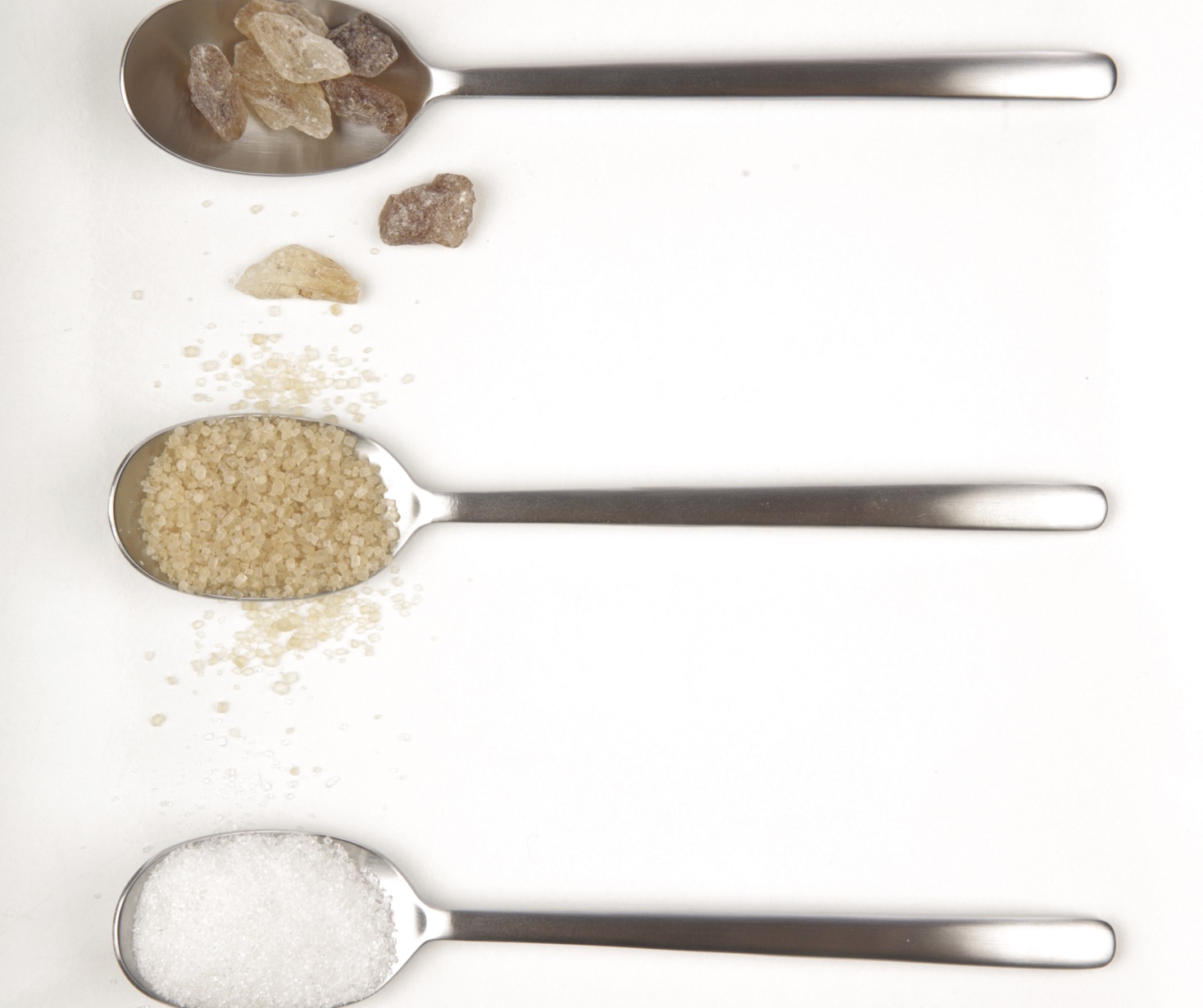
Common questions and research on sugar and sweeteners
Now that we’re all on the same page about what non-nutritive sweeteners, sugar alcohols, and natural sweeteners are and the different kinds, let’s dive into what the research says, and some common questions I get. I’ve linked many articles and studies throughout this blog post for additional resources.
Which sweeteners are bad for you? What does the research say about their effects on health? Do they cause cancer?
My opinion (a mix of professional and personal): For the general person without diabetes or insulin resistance, I recommend using artificial sweeteners and sugar alcohols in moderation.
Sugar alcohols do cause stomach upset for many people, and I do not typically recommend regularly consuming products that contain them. With that being said, occasional consumption of any of these is fine and will not cause harm.
Now, here is what the research says and some background info that I believe is helpful to know…
When the FDA approves a non-nutritive sweetener for use in the US, they designate an Acceptable Daily Intake (ADI) level. The ADI is the amount that a person (including pregnant and nursing women) can safely consume each day for a lifetime.
It would be incredibly difficult for a person to reach the ADI level for any non-nutritive sweetener. (This article from Harvard on artificial sweeteners lists the ADI for each of the non-nutritive sweeteners and is also a good resource if you’re looking to learn more.)
Is sucralose bad for you?
We cannot say any of these non-nutritive sweeteners directly causes any negative outcomes, but it is important to remember their impact on your taste preferences.
I’ll talk about this more below, but my preference for the average person is to use non-nutritive sweeteners as desired in moderation alongside some traditionally sweetened foods and beverages with sugar. For the person with diabetes, however, this may not be possible since some of those options can still raise blood sugar levels.
What is the best sweetener for diabetes?
For people with diabetes, including myself I recommend using non nutritive sweeteners as a tool to use when managing diabetes. Which sweetener to use will depend on your flavor preferences and the type of food you are consuming.
Table sugar and natural sugar can raise blood sugar levels for someone living with diabetes, therefore, it may not be an ideal choice all the time.
How do different sweeteners effect your blood sugar, and should you take insulin for them?
You do not need to take insulin for non-nutritive sweeteners.
On average, sugar alcohols contribute about half of the carbohydrate value that sugar does. On a nutrition label, sugar alcohols are listed as a type of carbohydrate and are included in the Total Carbohydrate count.
It is recommended to subtract half of the Sugar Alcohol grams from the Total Carbohydrate grams when calculating insulin dosages. This will vary from person to person though and should be monitored closely with help from your doctor.
Natural sweeteners (as defined in this article) are absorbed just like table sugar, and if you need to inject insulin to manage your diabetes, you should take insulin for them as you do other carbohydrates.
Glycemic index
Glycemic index (GI) is a tool used to rate how quickly a particular carbohydrate causes your blood sugar to rise. Foods are ranked into low, medium, and high categories on a scale of 0-100. Below is a list of sugars previously discussed and their GI rating.
Xylitol (sugar alcohol), maple syrup, and coconut sugar fall into the “low” category, while sucrose falls into the medium category, and high fructose corn syrup falls into the “high” category.
- Xylitol: 7
- Maple syrup: 54
- Coconut sugar: 55
- Sucrose: 60
- High fructose corn syrup (HFCS): 90-100 (varies on the brand)
Do artificial sweeteners cause insulin resistance?
Some small research studies indicated artificial sweeteners may make people crave sweet things more and could increase insulin resistance, but this data is not conclusive.
Do artificial sugars give us a sweet tooth?
It’s easy to see how consistent exposure to intensely sweet things can create a preference for (aka, craving) sweet foods, but this is not decisively documented in the research. Many of the artificial sweeteners are infinitely sweeter than actual sugar.
How much is too much for artificial sweeteners?
See the discussion above on ADI and the safety levels set by the FDA.
Why does stevia have a weird taste?
The sometimes bitter taste associated with stevia comes from the plant it is derived from. Because of this, it is often used in combination with sugar or another non-nutritive sweetener.
My favorite stevia based sweetener is Truvia Sweet Complete. Some of my favorite recipes using it include:
- Easy Oatmeal Breakfast Cookies
- Gluten-Free Pumpkin Cheesecake Bars with Oatmeal Crust
- Diabetes-Friendly Sourdough French Toast
- Diabetes Friendly Easy Gluten Free Brownies
What’s better: smaller quantities of the real stuff or bigger amounts of the fake stuff?
For the average person, without diabetes: smaller quantities of the “real stuff” and occasional use of non-nutritive sweeteners is just fine. For someone with diabetes, this should be discussed with your physician or dietitian.
What’s the healthiest sweetener?
As mentioned above, for a person not living with diabetes or insulin resistance, I recommend small amounts of table sugar and moderate consumption of non-nutritive sweeteners when desired.
What’s the best natural sweetener?
As defined in this article, I prefer maple syrup, dates, or coconut sugar. This is purely personal preference based on how they affect my blood sugars and how each of these performs in recipes.
What is refined sugar?
Refined sugar is made from extracting sugar in foods like sugar cane, sugar beets, or corn. This extracted sugar is then added back into foods and commonly processed into table sugar or high-fructose corn syrup (HFCS).
What is regular sugar?
Regular sugar, another word for table sugar, is a type of refined sugar. Also known as sucrose, a disaccharide containing glucose and fructose molecules. This means it must be broken down into a simple sugar (or monosaccharide) to be absorbed into your bloodstream.
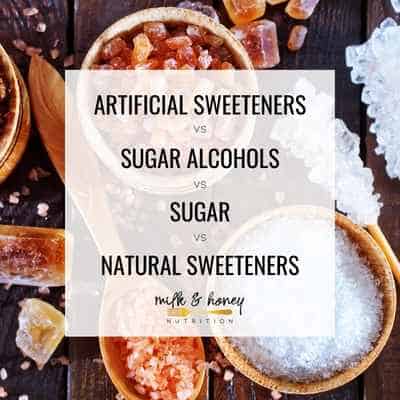

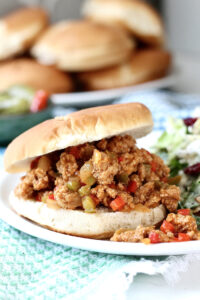
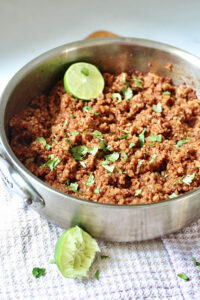
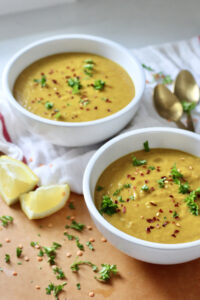

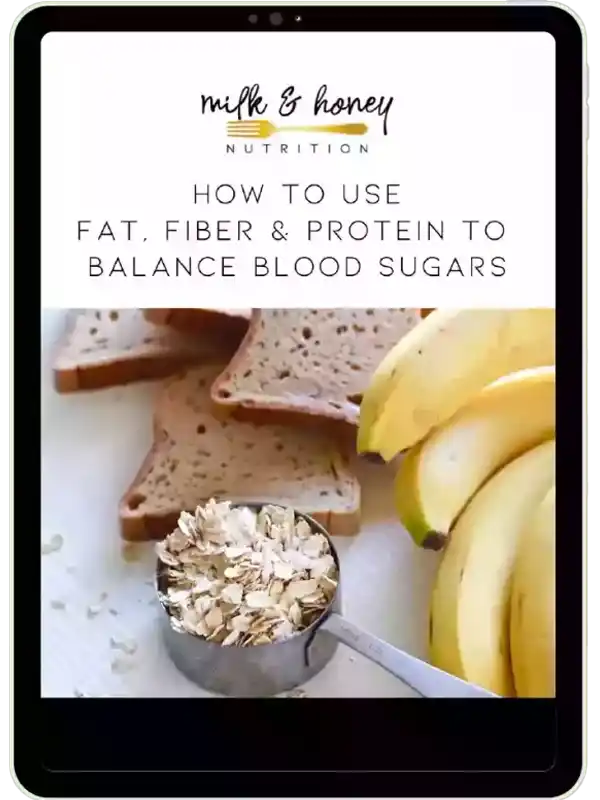
3 Responses
Thanks for the article …. well done, straight forward, informative, enough info without being overdone and easy to read. I trust your info and we are redoing our sweetners based on your article.
Again, thanks
Marvin
Excellent review of sugars and sugar substitutes. Very good and practical information. Thank you!
Great read, although my experience and opinion differs. My daughter has both autism and diabetes. Sugar substitutes, like saccharin and sucralose make her incredibly thirsty and seem to drive her negative behavior. Sucralose is known to interfere with “good” gut bacteria, and is linked to leaky gut syndrome and unexplained anxiety. Sugar alcohols have had much less of an effect on her behavior, but consumption of more than just a small amount causes diarrhea. We prefer sugar alcohols over sugar substitutes, but we use neither. She’s had much better luck consuming small amounts of naturally-sweetened foods and drinks made with real sugar (no Stevia) with healthy servings of green vegetables and juices throughout the day. A1C is currently around 6.2.